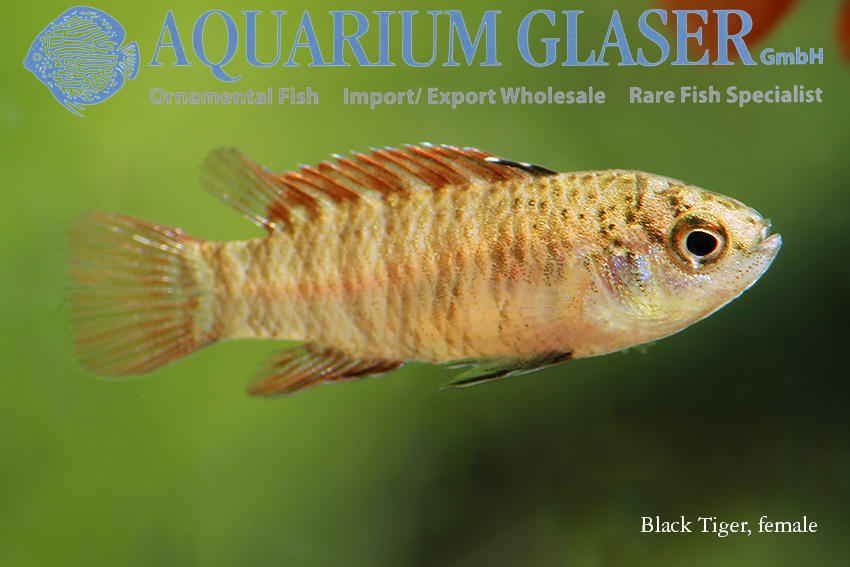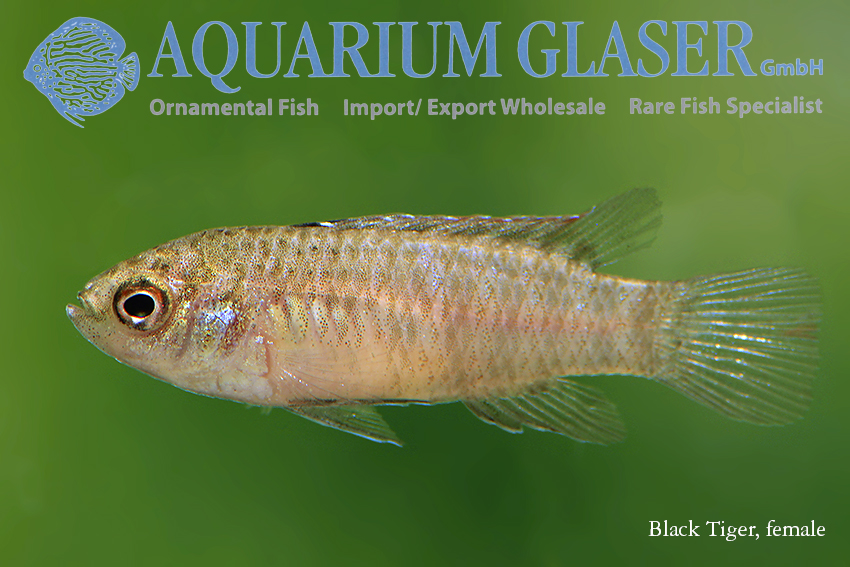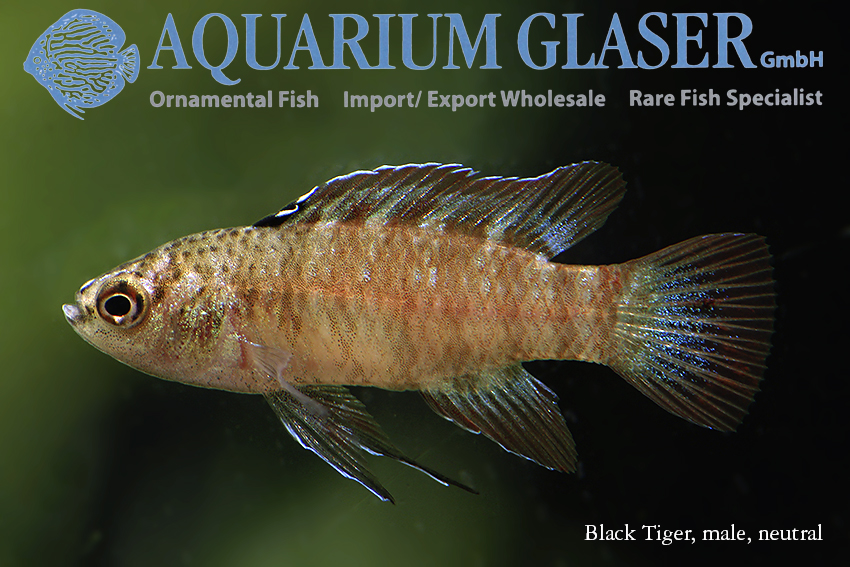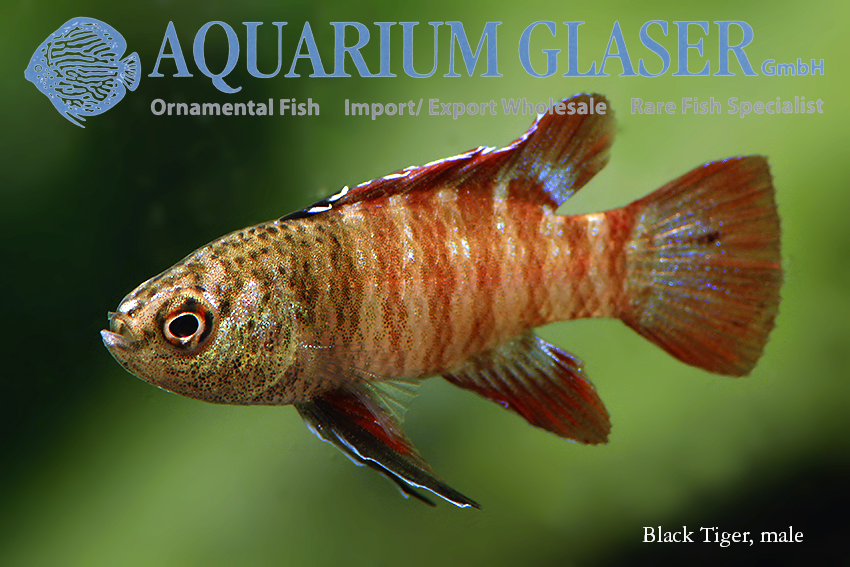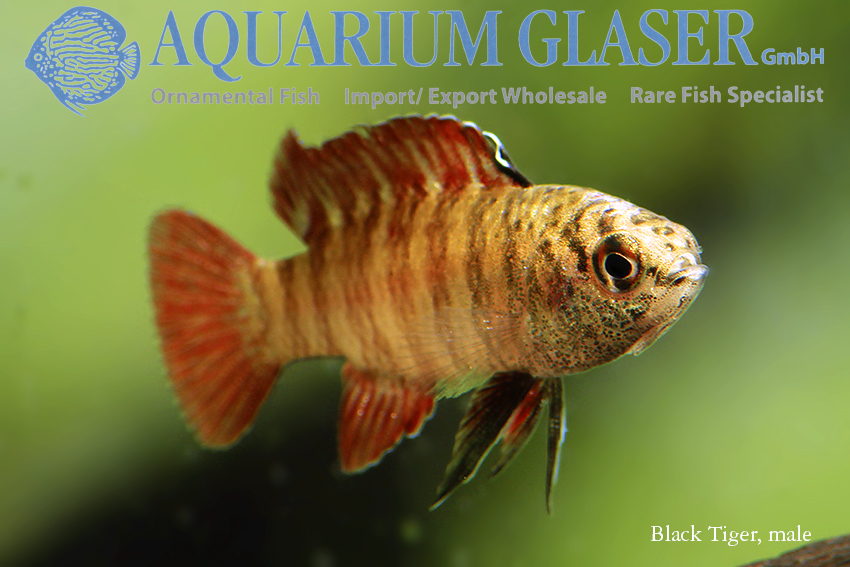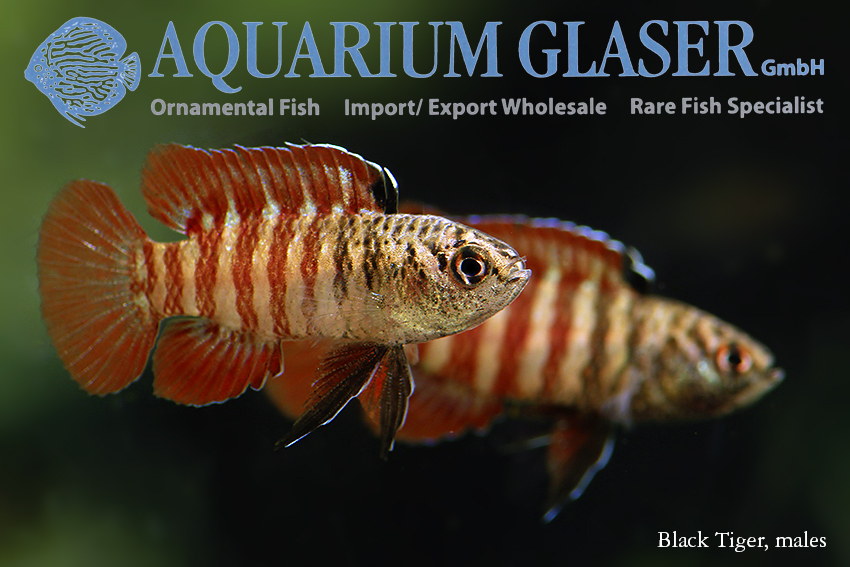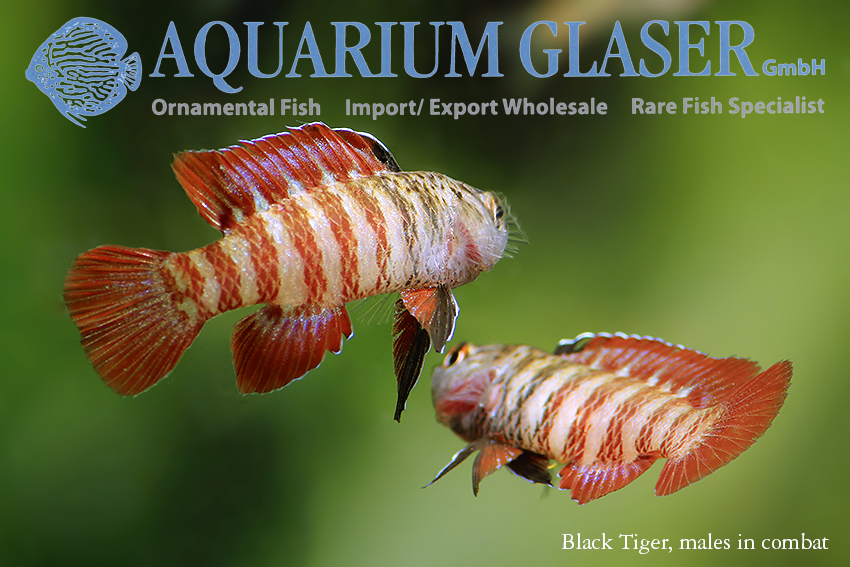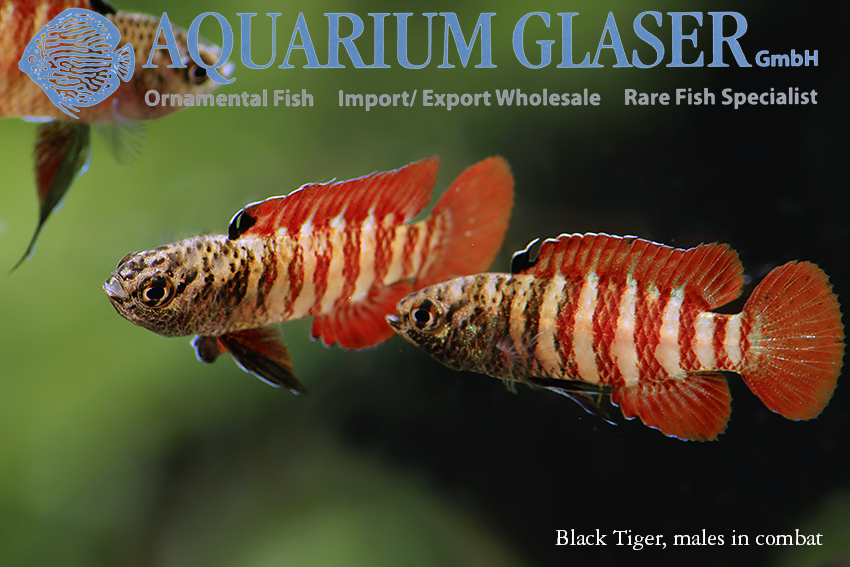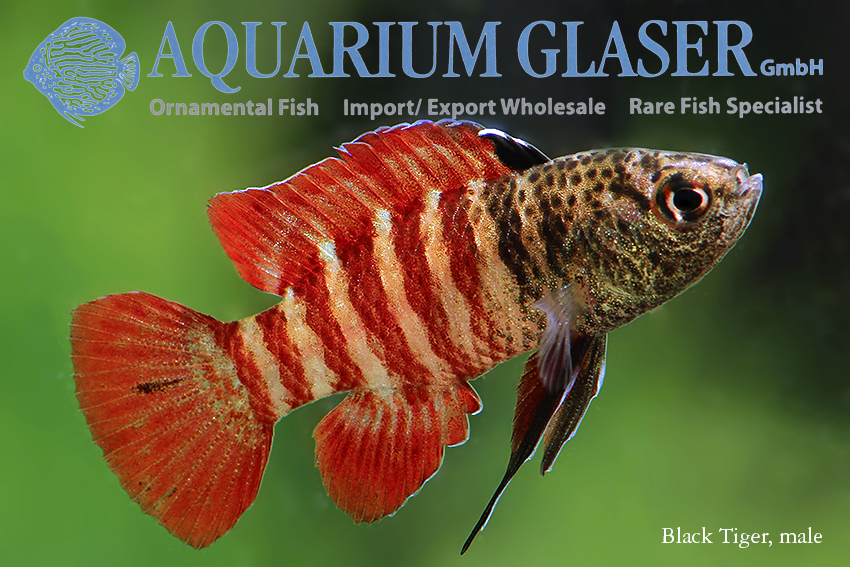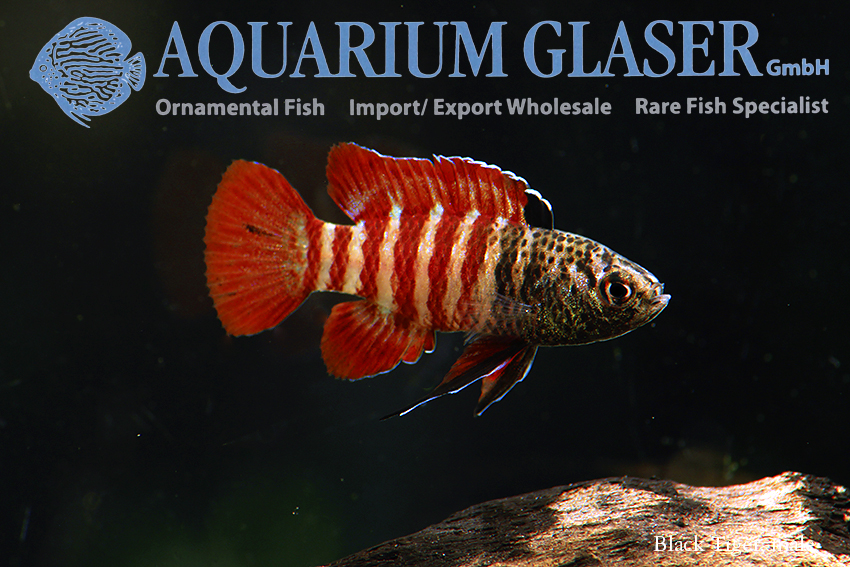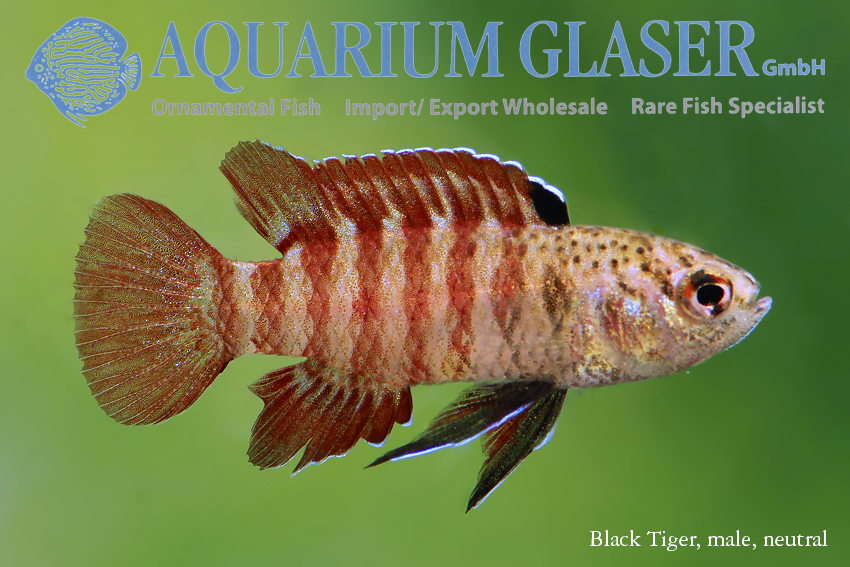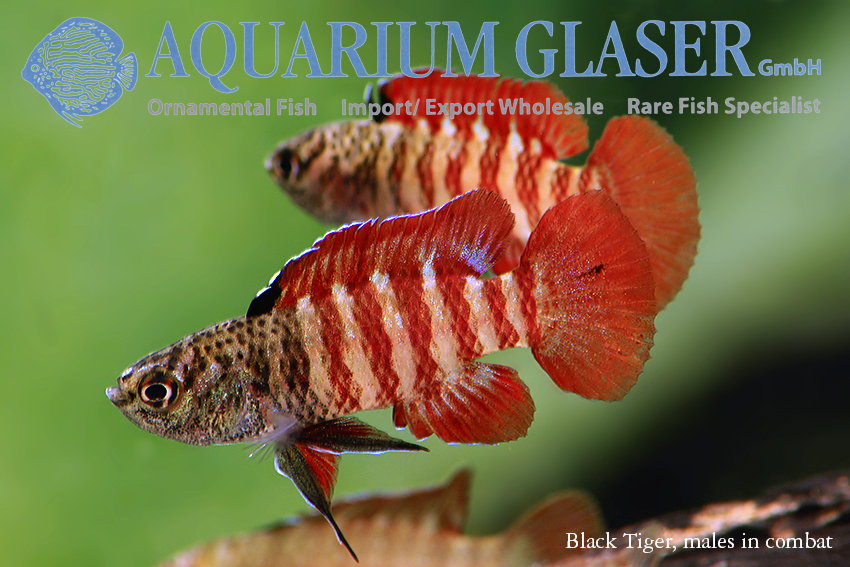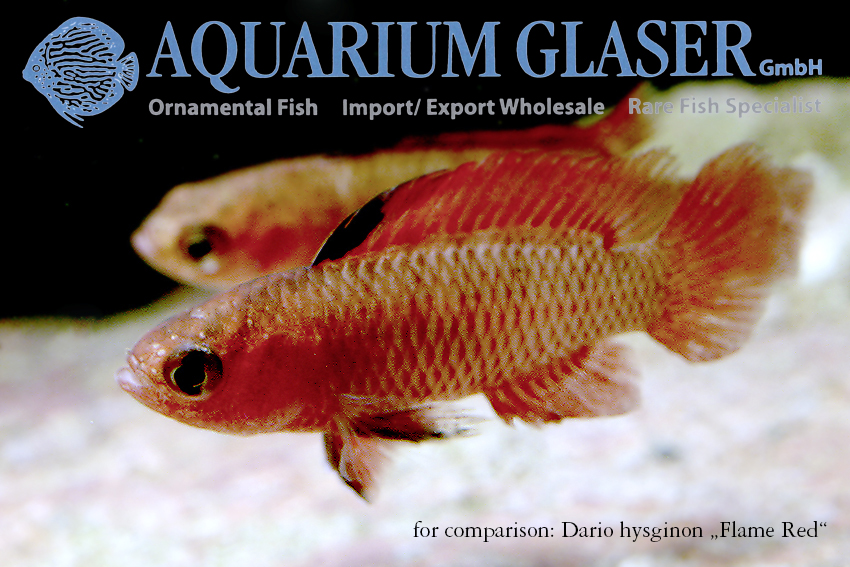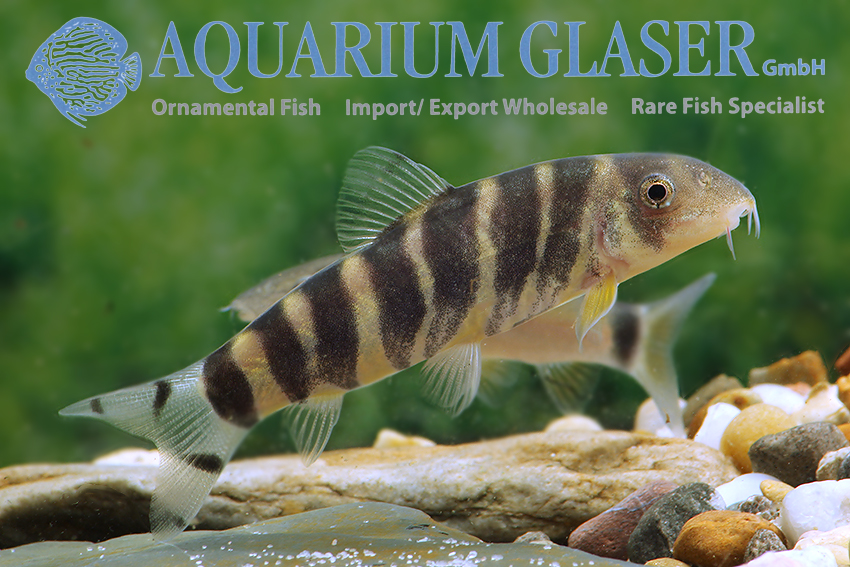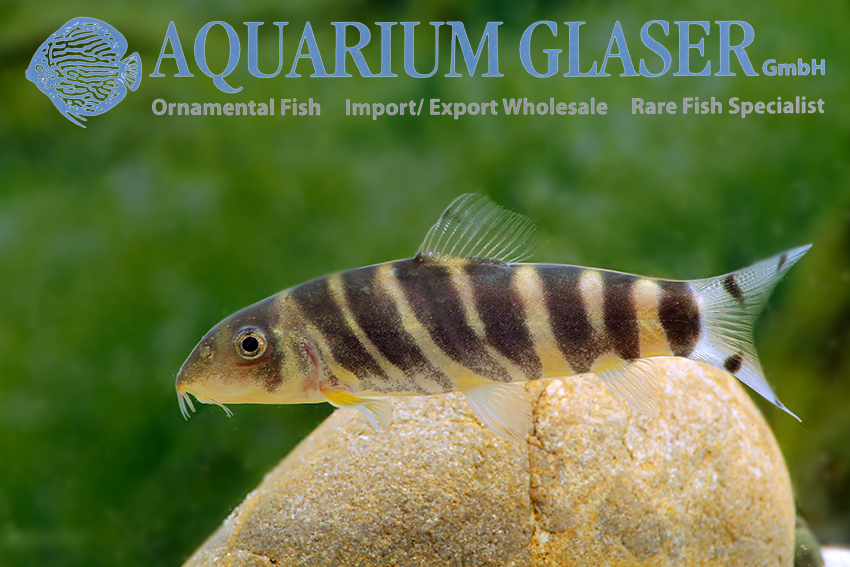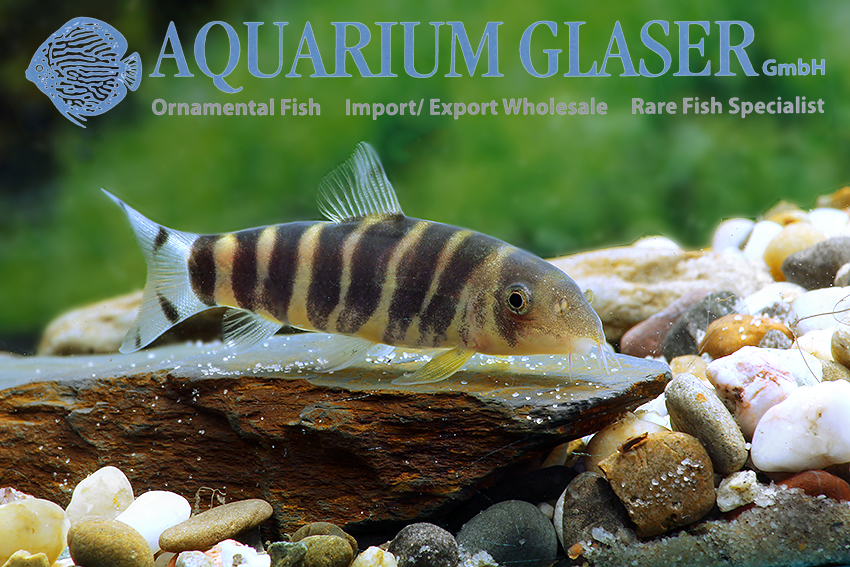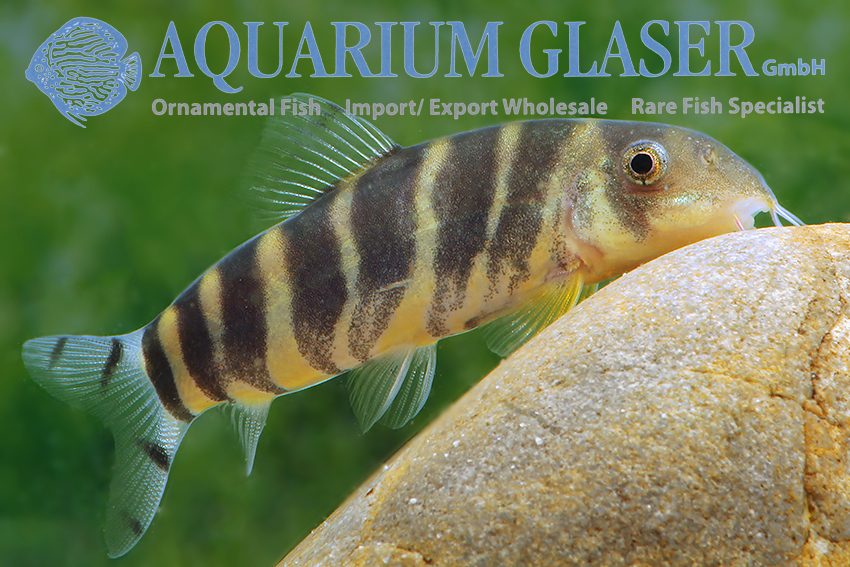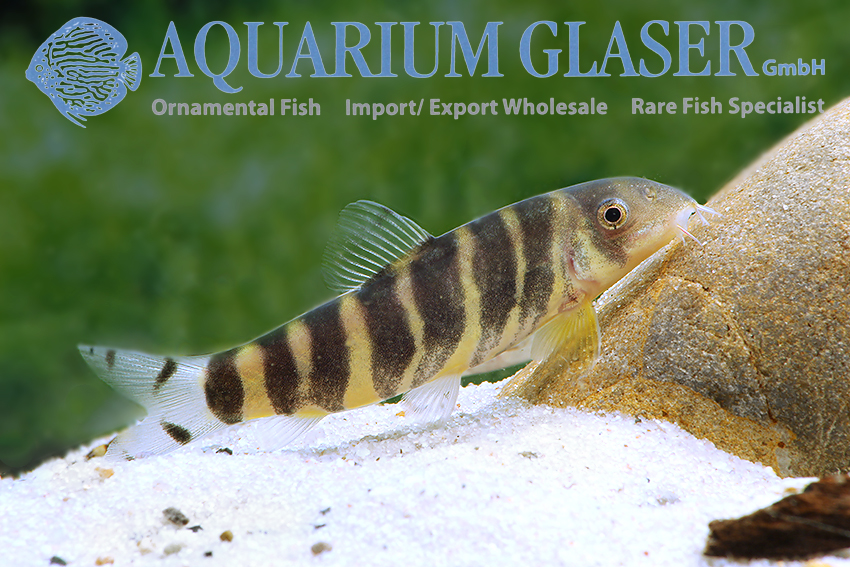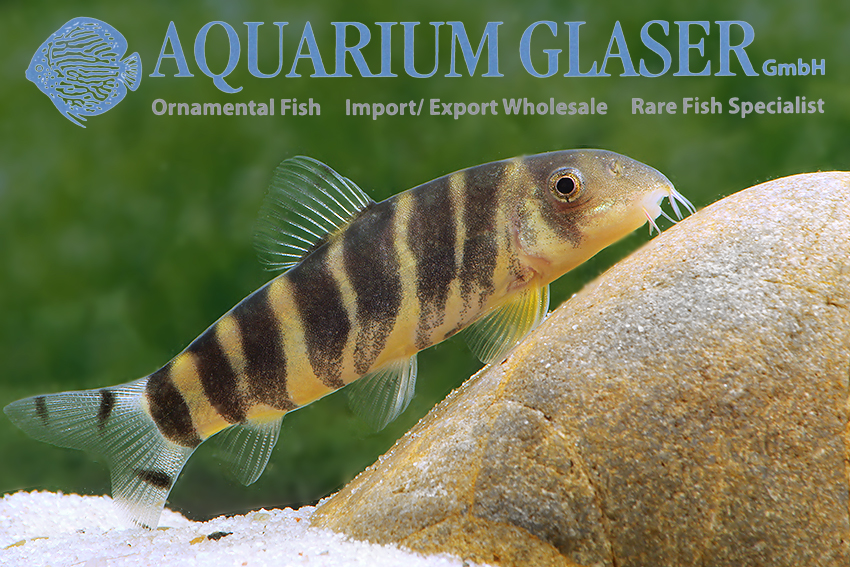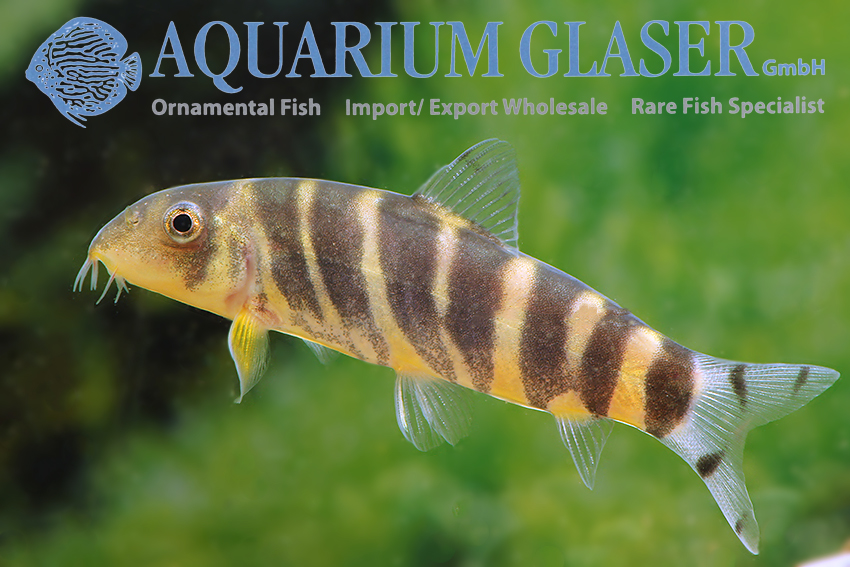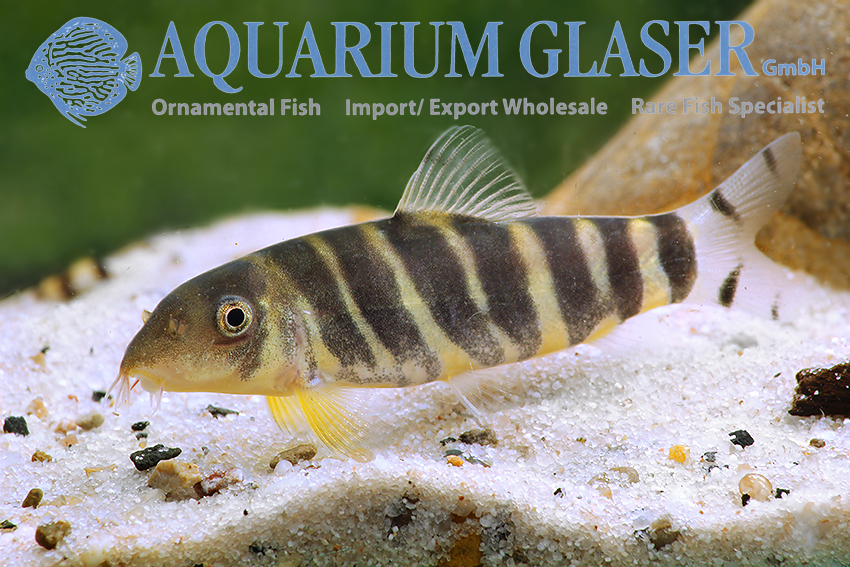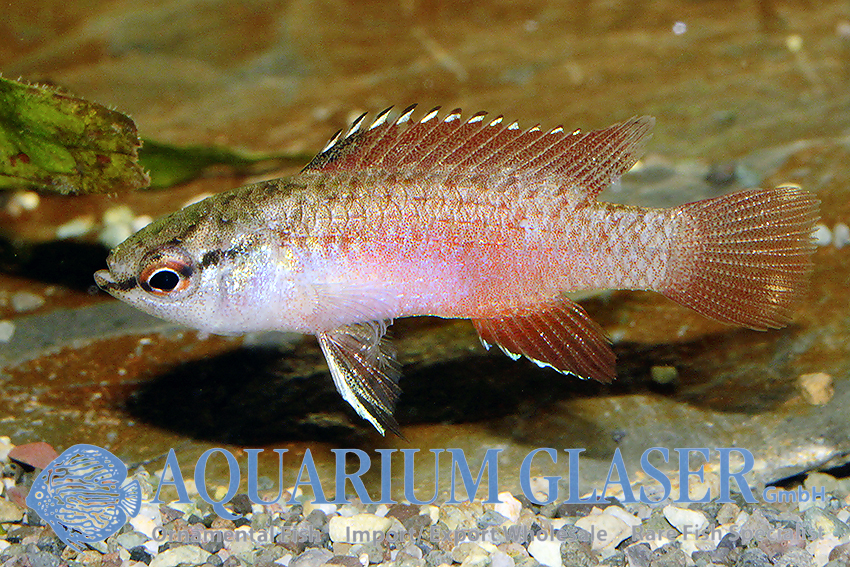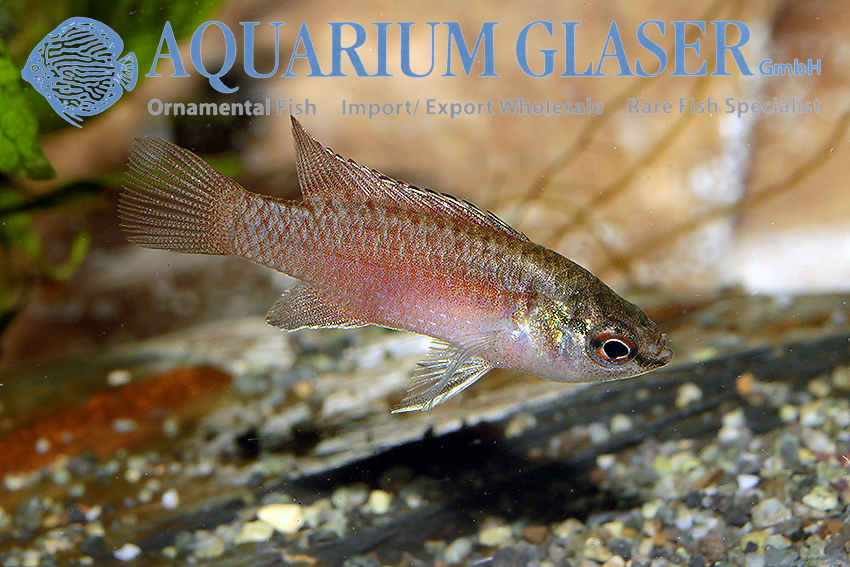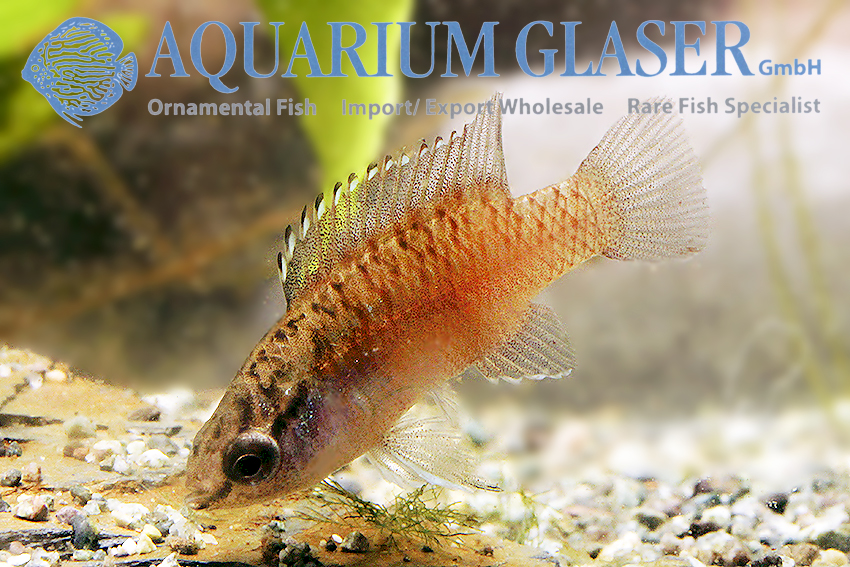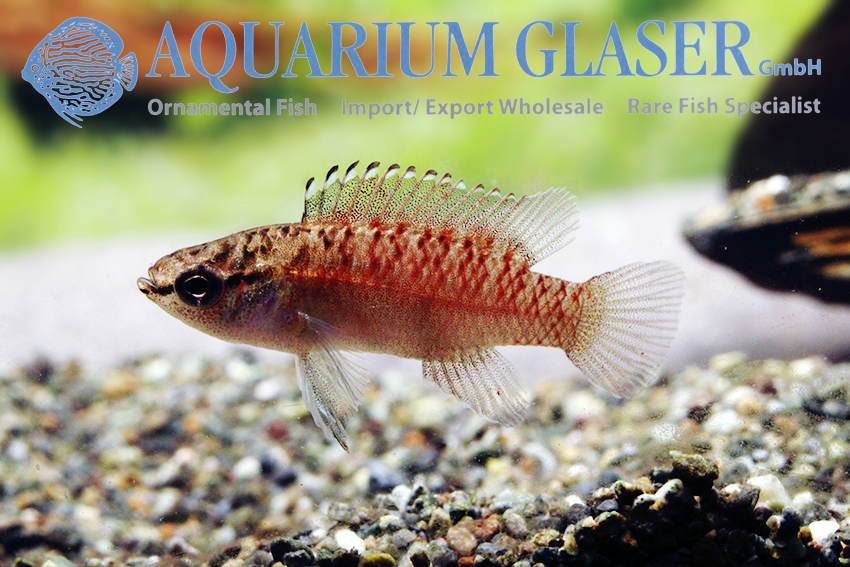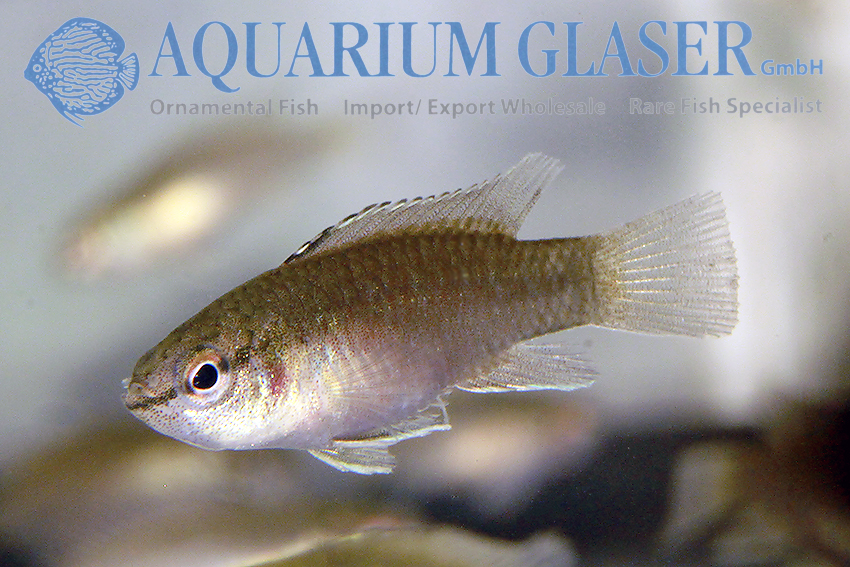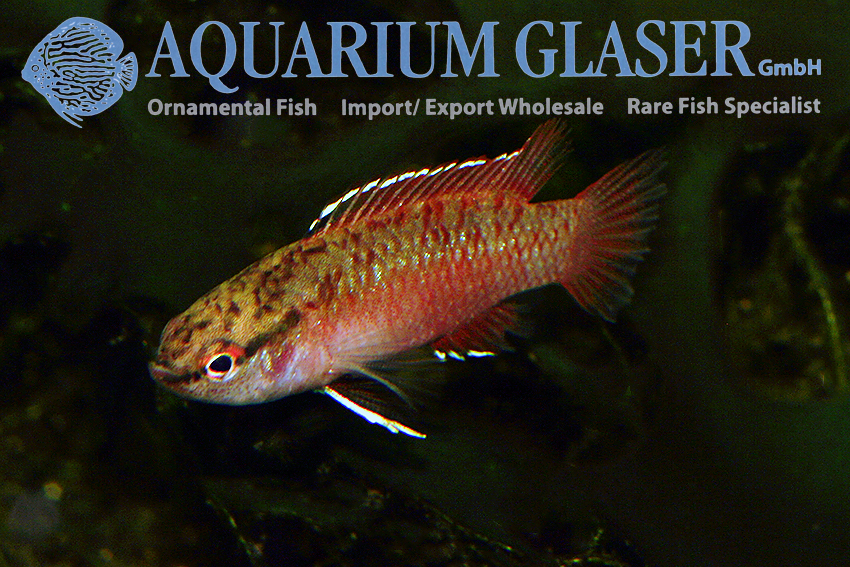The cute Flame Red Dwarf Badis (Dario hysginon) we have quite regularly in our stock. It originates from Burma (drainage of the Irrawaddy, Myitkyina District, Kachin State). More pictures of the species can be found here: https://www.aquariumglaser.de/fischarchiv/dario_hyginon_2__en/
Partly together with the Flame Red another dwarf badis occurs in nature, which is already mentioned in the first scientific description: the “Black Tiger”. Concerning the measurable values the Flame Red does not differ substantially from the Black Tiger and therefore both were led for a long time “officially” also only as color variants of the species Dario hysginon. However, aquarium observations suggested that they are separate species, because they do not interbreed in the aquarium.
Now the discoverers of the “Black Tiger”, who originally classified it only as a variant of D. hysginon due to the paucity of material and the fact that it occurs together with Dario hysginon, have described it as a distinct species after all. It is now officially named Dario tigris Britz, Kullander & Rüber, 2022. The main differences from D. hysginon are in coloration and genetic differences, there are also minor anatomical differences between the two (fewer dorsal fin spines and vertebrae on average in D. tigris). In addition, the authors noted that Dario tigris only sometimes coexists with D. hysginon. Type locality of Dario tigris is an unnamed stream in Kachin State south of Mogaung.
Unfortunately, it is impossible to distinguish the two species in startle coloration from each other with certainty, which is why a certain mix arrives with us from time to time. Colored animals on the other hand are hardly to be confused. By the way, the females of the Black Tiger have, just like the males, a dot pattern in the neck, which makes it quite easy to distinguish them from striped females of the Flame Red.
For our customers: Dario hysginon has code 413783, D. tigris 413796 on our stock list. Please note that we cannot sort Flame Red and Black Tiger 100% and only supply wholesale.
Text & photos: Frank Schäfer
Literature:
Britz, R., Kullander, S. O. & L. Rüber (2022): Dario tigris and Dario melanogrammus, two new species of miniature chameleon fishes from northern Myanmar (Teleostei: Badidae). Zootaxa 5138 (1): 001–016





